- Architect
CO Architects - Location
Los Angeles, California - Completion Date
November 2020 - Construction Manager at Risk
Rudolph and Sletten - MEP Engineer and LEED Consulting
Affiliated Engineers (AEI) - Structural and Civil Engineering
KPFF Engineering - Landscape Architect
Studio-MLA - Lighting Designer
KGM Architectural Lighting - Historic Consultant
Page & Turnbull - Curtain Wall
Arcadia Windows - Insulated Glass Units
Viracon - Dampers
Taylor Devices
CO Architects’ renovation of architect Paul Revere Williams’ Pritzker Hall at University of California Los Angeles (UCLA) features an updated facade and seismic improvements. The 1967 building houses part of UCLA’s Psychology Department and rises 11 stories—three of which are below grade. Its cubic shape is formed by a structural concrete grid.
The University decided to renovate the building—formerly known as Franz Hall II and the Psychology Tower—upon discovering seismic deficiencies, and to accommodate the school’s growing psychology program. CO Architects had previously led the renovation of the campus’ 1929 Royce Hall.
CO associate principal Phillip White explained that UCLA “fortunately” saved Williams’ original plans of the building from the early 1960s. Prior to the renovation the architects visited a number of Williams’ other designs around Los Angeles, including the Beverly Hills Hotel and the Shrine Auditorium. White described how the design team took note of Williams’ form-follows-function designs, though, pointed out that the openings in Pritzker Hall’s five-story structural grid did not always correspond with windows, as they were not appropriate for certain research needs. Hence, the unified facade gave an illusion of uniformity across its four faces despite the more private, windowless interior spaces.
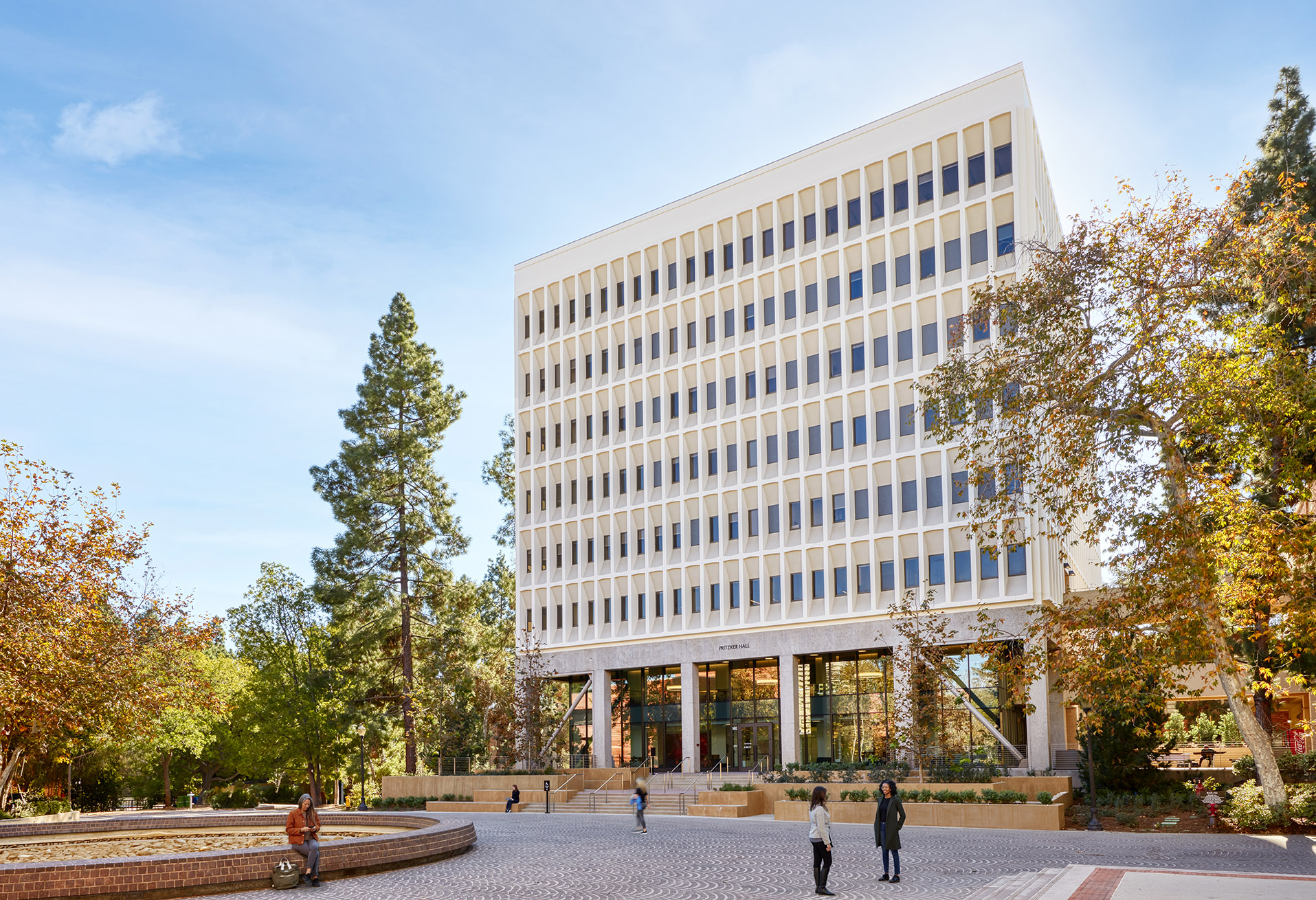
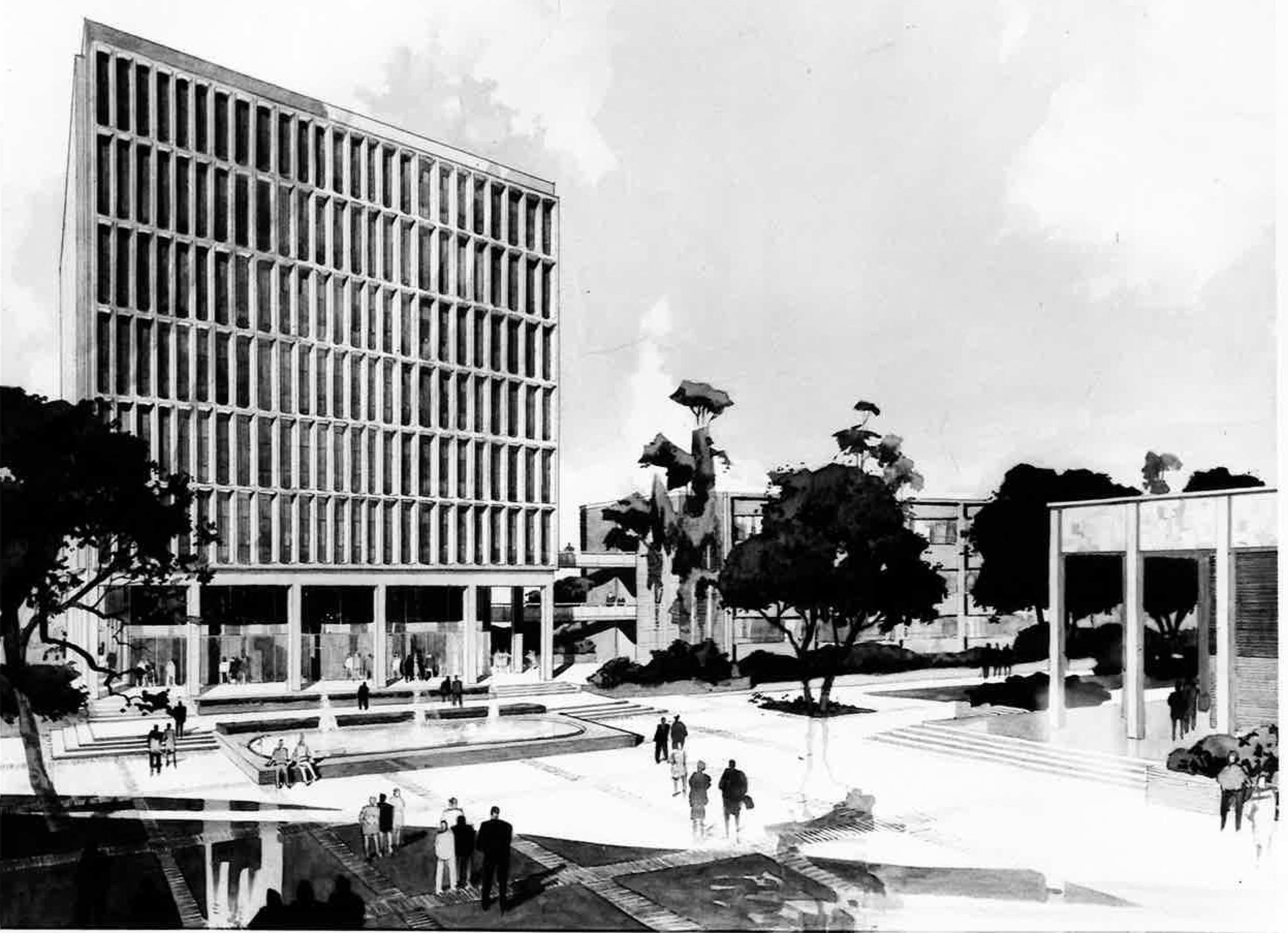
Williams designed the openings in the grid to include a modest curve at the top and bottom of the opening, with “angled cement-plaster headers and spandrels at each window, or a cement-plaster panel opening.” Bronze-anodized aluminum frames surrounded single pane, bronze-tinted windows, and the structural concrete was painted in brown and tan hues.
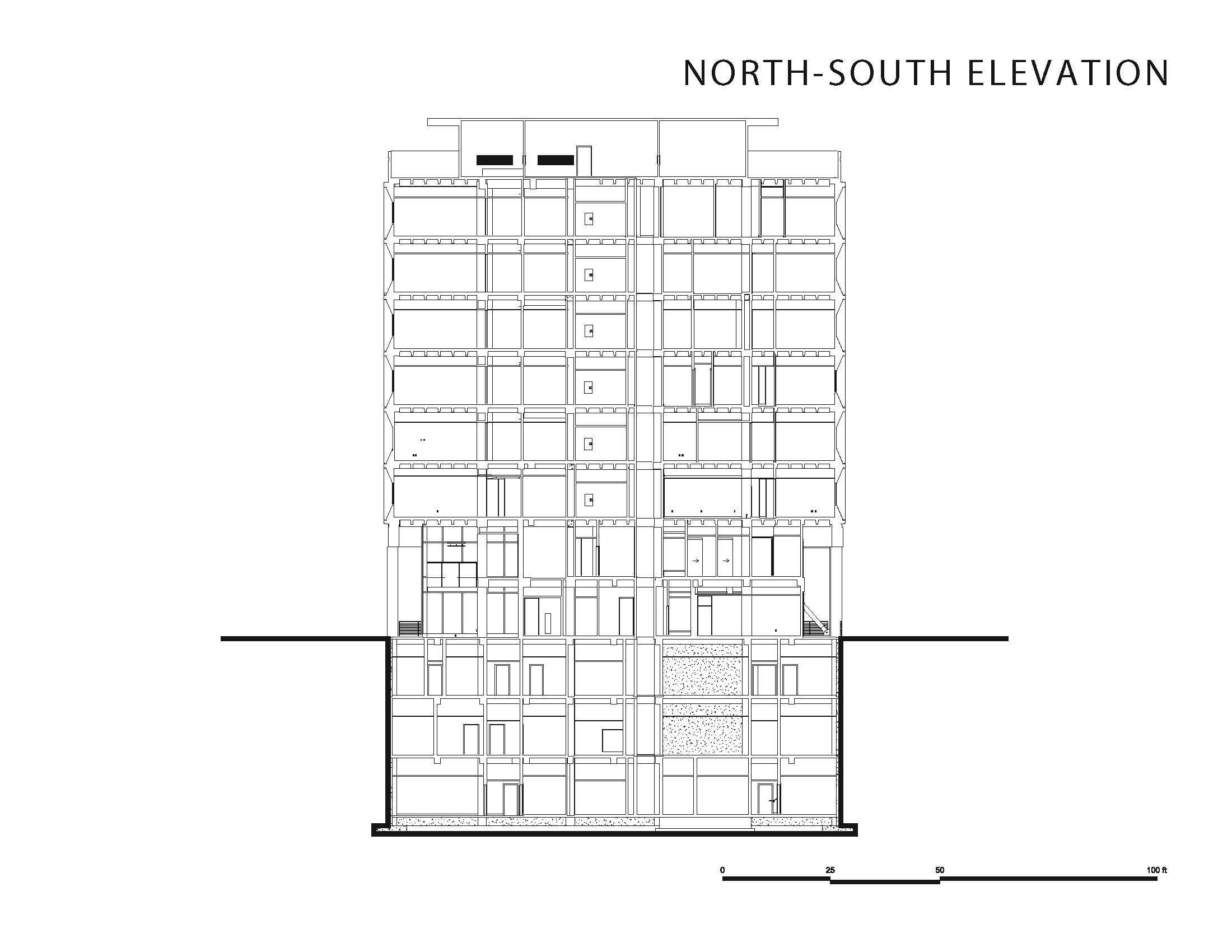
The CO team studied the color profile of UCLA’s campus, selecting the new paint color from “a palette of surrounding buildings,” opting for a white sandstone color that they felt would be more integrated with the campus. The cement-plaster headers were painted in a lighter shade in order to remain legible, and the cement-plaster infills were painted with a high-sheen dark gray in order to “help unify the facade… simulating the reading of a window,” said White.
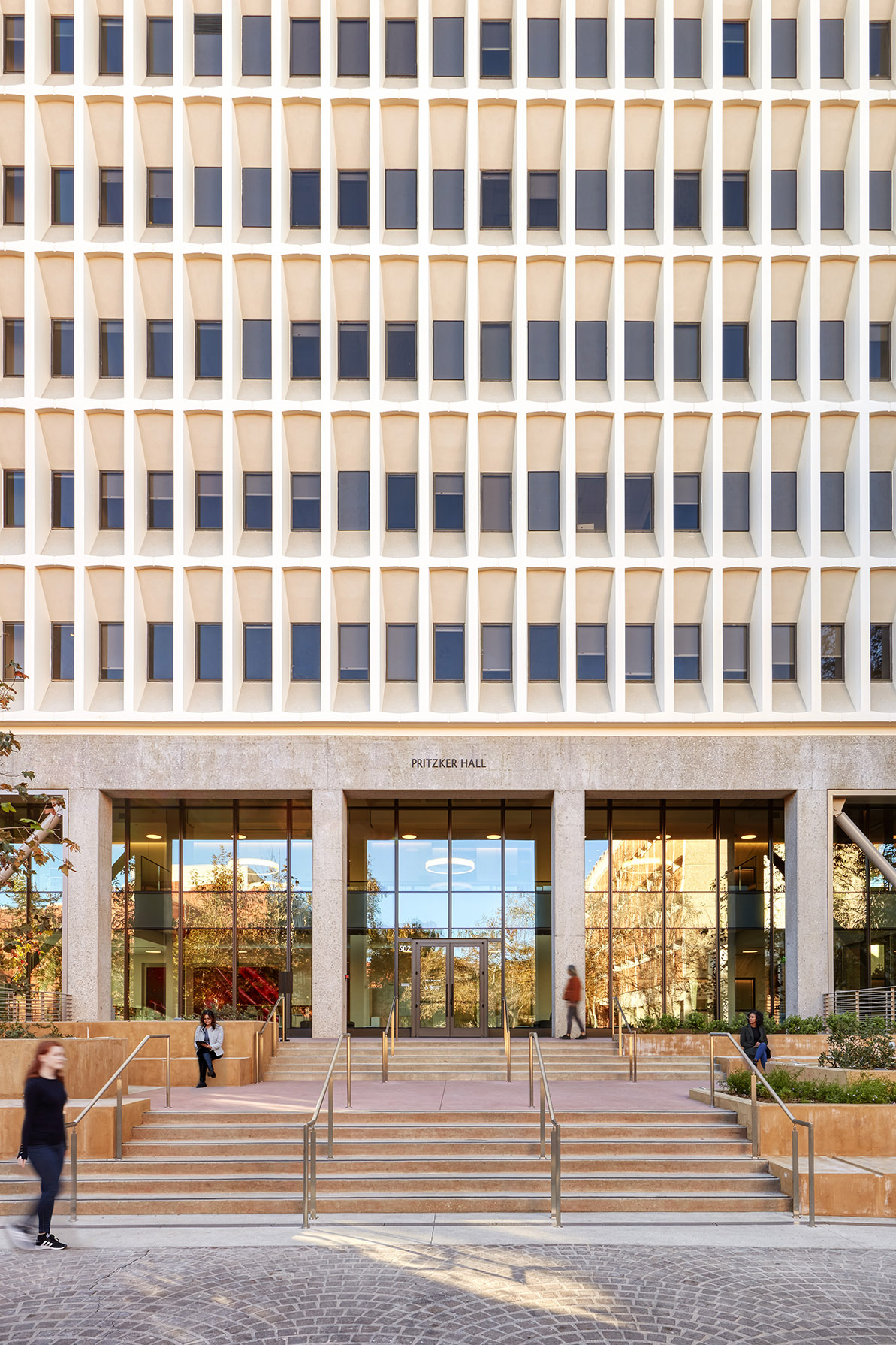
Programmatically, the 125,000-square-foot building included laboratories, offices, classrooms, collaboration spaces, and a double-height lobby. While many interior renovations worked around a building that received more daylight, and subtle material changes, the new lobby was a more significant adaptation from Williams’ design. Workers sandblasted the exposed concrete frame, refurbished the exterior terrazzo flooring, and painted the “character-defining” cement-plaster banding. Workers also installed new windows—still bronze-tinted—on parts of the upper levels to match the existing glazing. Thermally broken aluminum frames with high-performing insulated glass units and mechanical and lighting upgrades permit the building to achieve LEED Platinum certification.
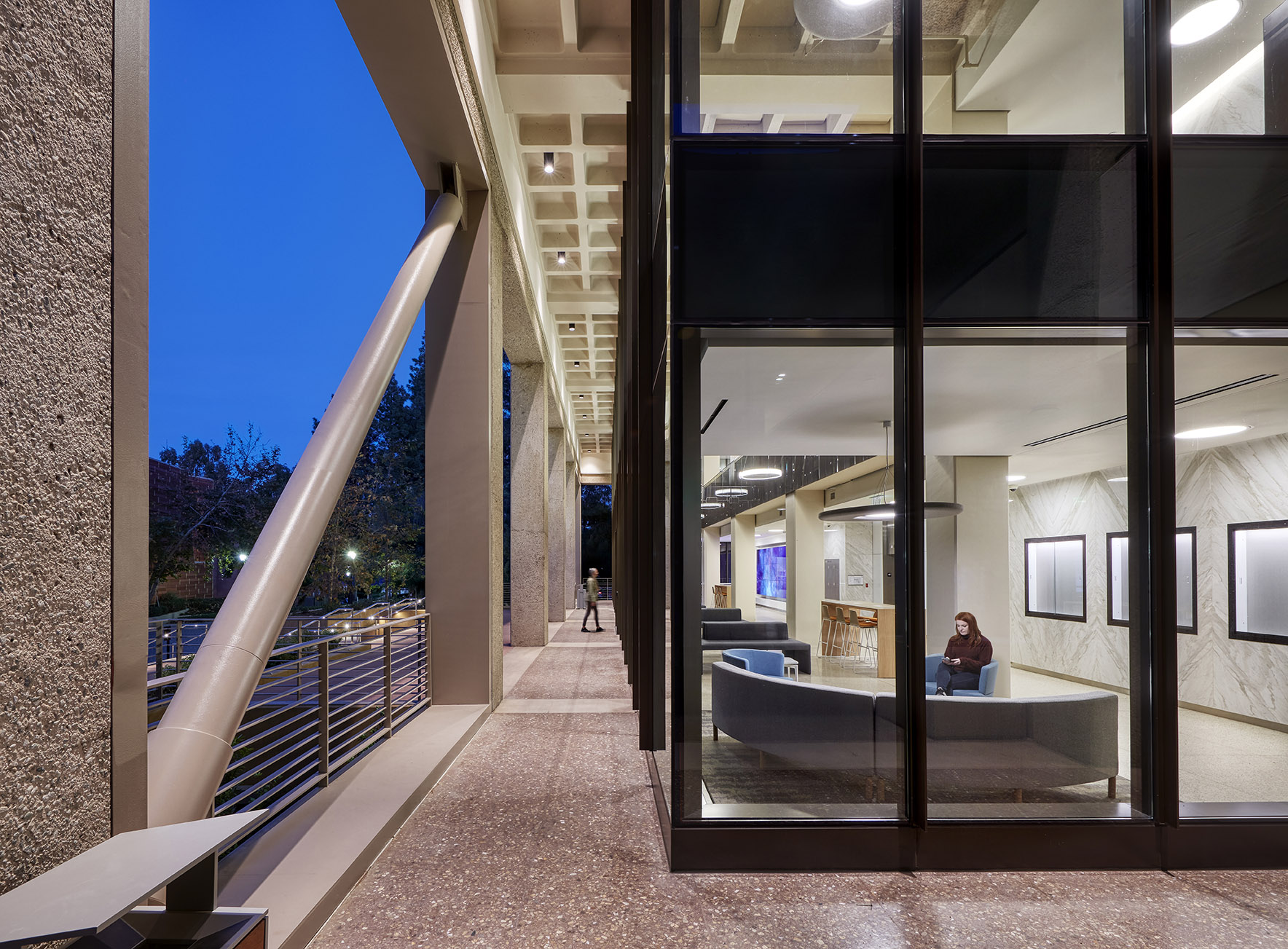
CO designed a heightened lobby to rise the full two stories of the hall’s arcade, “creating a new presence for the building,” in the words of White. Aragon Construction installed a double-height curtain wall from Arcadia Windows, and storefronts in the arcade were clad in aluminum to match the new curtain wall. Aragon worked with CO on shop drawings to ensure the design intent was followed through during installation. The curtain wall features deep aluminum framing members and Viracon low-iron insulated glass units. White noted that “the connection at top of the arcade’s waffle slabs was also challenging to fabricate,” since it required custom panels to fit the curves of the waffle slab at the head of the curtain wall.
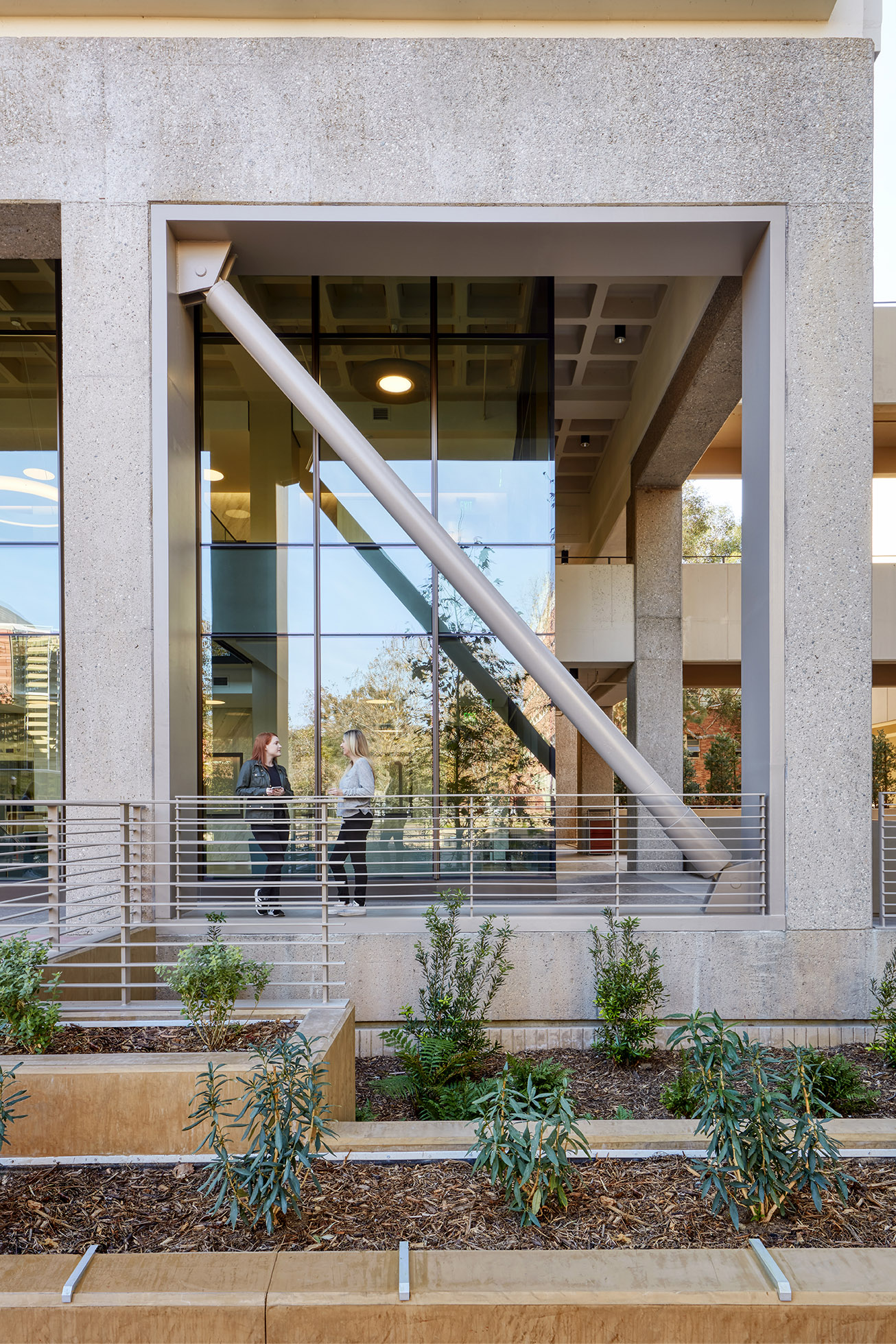
Structurally, CO, and historical consultants Page & Turnbull, needed to upgrade the building to meet the University of California’s Seismic Policy, which lays out building requirements and safety protocols in the event of an earthquake. Page & Turnbull marked the hall as eligible for a Historic Register listing, meaning that the design team had to retain as much of the original facade as possible while designing for seismic upgrades. As White said, the University “advocated for the retention of character-defining features, such as the external structural grid.” Heavy-duty external bracing and framing would have been the most cost-effective solution for seismic-proofing the building, but it would have ruined much of the 1967 design. UCLA’s Engineering Department conducted earthquake simulations on a model of the hall, and KPFF + CO designed custom viscous dampers with input from fabricator Taylor Devices. The two-story dampers were installed on each exterior corner of the arcade, and at the perimeter of the core on the upper floors. This system minimized the structural adaptations of the original facade. Steel plate trims were installed to “conceal” the connections the dampers required through beams and columns, and were finished with a high-performance coating that complements the refurbished terrazzo and banding.











